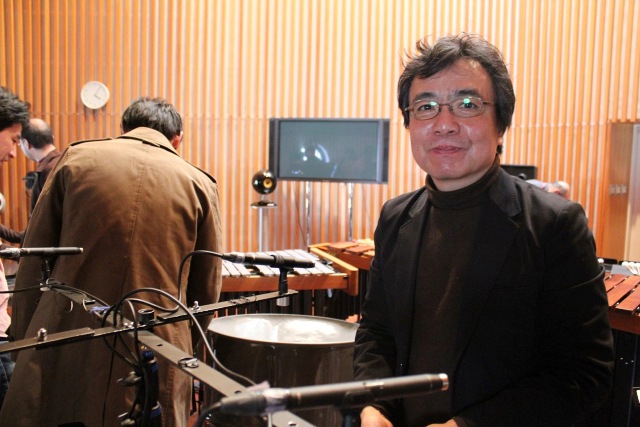DPA Microphones Help the Fukada Tree Bloom

LONGMONT, CO, SEPTEMBER 7, 2012 - Internationally renowned recording engineer and lecturer Akira Fukada has specified DPA Microphones 4011A directional, 4006A omnidirectional and 4015A wide cardioid ORTF microphones as best suited to his Fukada Tree arrangement. Supplied by DPA's Japanese distributor Hibino, with whom Mr. Fukada has subsequently presented a number of seminars and workshops explaining the Fukada Tree, Fukada chose the brand for its rich bass and high frequency sound that does not blot during the recording process.
Mr. Fukada made an enormous impact at the New York AES Convention in 1997 when he unveiled the Fukada Tree seven microphone arrangement - a totally new technique for recording orchestral music in surround sound for subsequent broadcast or CD release. Developed to resolve some of the problems engineers had encountered when trying to record spatial environments with traditional omni-directional microphones, the Fukada Tree clarified microphone positioning and also incorporated directional microphones for main and environmental sounds.
Originally designed for Japanese state broadcaster NHK, the Fukada Tree is now owned by Mr. Fukada's company, Dream Windows, Inc., which consults on a wide range of music recording, special sound design and audio issues. Whether with NHK or Dream Windows, Mr. Fukada has specified DPA microphones from the outset.
"I insist on using DPA microphones because I like the transparent feel they deliver," says Fukada, CEO of Dream Windows, Inc. "When recording piano, for example, they give me the clear attack sound and the beauty of reverberation when the sound attenuates. Their wide dynamic range and rich bass vigorously catches the expression of an orchestra, while for string ensembles recorded in a studio, they capture the rich overtones and give a better feeling of air."
Since first announcing the Fukada Tree arrangement, Mr. Fukada has made a number of positioning modifications to improve front localization, but his choice of microphones remains constant and continues to be DPA. "The LL/RR microphones on both sides are intended to pick up the orchestrated sound expanse and a smooth sound envelope covering the front and rear sections of the hall," he explains. "I don't, however, use LL/RR microphones for small music ensembles. My arrangement incorporates DPA 4011A directional microphones and DPA 4006A omnidirectional microphones from the Reference Standard Microphone Series. The configuration of the tree can vary depending on the hall's acoustic characteristics, while the intervals at which the microphones are placed can also change to conform to the size and formation of the orchestra."
In recent months, Mr. Fukada has used DPA microphones and the Fukada Tree to record a number of prestigious recording projects, including Shostakovich's Symphony No. 5 with the Saito Kinen Orchestra, directed by Seiji Ozawa.
"I also use DPA microphones for projects that don't require the Tree," he says. "Recently, I selected the DPA 4006 for a Decca Tree stereo configuration to pick up string ambience in a studio setting. I also use the DPA 4015A wide cardioid ORTF for piano, and if I am recording acoustic guitar, I like to use a DPA cardioid 4011 XY. For me, DPA microphones are indispensable because they suit any musical instrument and provide all the accuracy that I need."
The professional video industry's #1 source for news, trends and product and tech information. Sign up below.
Ken Kimura, DPA Microphones' Regional Sales Director, Asia Pacific, says: "Following the upgrade and release of our finest Reference Standard Microphones, and given Mr. Fukada's requirement for the best audio equipment, I'm very pleased to see that he continues to rely upon our 4006A, 4011A and 4015A mics for his recording sessions under Dream Windows, Inc."
